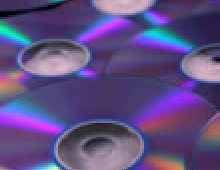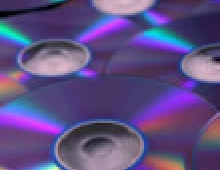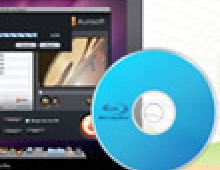
Deciphering DVD 'Code' Game
The billionth digital video disc was shipped this summer, a sure sign that the DVD format is here to stay. By the end of the year, half of U.S. households will have DVD devices, says the trade organization DVD Entertainment Group. And yet there are some aspects of the DVD format that few consumers understand. Take the DVD region coding system.
DVDs are coded to play in only one of six regions. So if your disc was meant to be played in the U.S. or Canada (the domain of Region 1), it won't play on DVD players in China (Region 6).
Sellers of DVD media work together with equipment makers to enforce the standards. Most DVD players sold in the U.S. work only with Region 1 discs. Conversely, almost all DVDs sold here play only on Region 1 players.
Why the elaborate system? Movie studios want to release DVD movies in different markets at different times.
A Counter Vs. Pirates
A studio may issue a DVD movie in the U.S. while the film is still playing in theaters abroad. The studio doesn't want to jeopardize its foreign theater revenue by having that DVD pop up overseas.
"The system was requested by the motion picture companies of Hollywood for the reason that the theater releases were not simultaneous among the countries in the world," said Hideyuki Irie of DVD Forum, an industry group.
Region codes serve another purpose: They make life harder for pirates. A counterfeit DVD factory in China can't spit out thousands of copies of a movie and then ship them all over the world. It would have to tailor copies to specific regions. That adds to the cost and complexity of the job.
Most consumers pay no attention to region codes, says the Digital Entertainment Group. But the codes do raise the ire of some.
Why? Because people don't want to wait. It can be frustrating to know that a DVD is available in another region, but not yours.
U.S. movies are typically released as Region 1 DVDs first, but not always. Some DVDs debut in Europe, and it can take some time for them to arrive in the U.S.
The same goes for DVD versions of TV shows. Take the fantasy show "Buffy the Vampire Slayer." Just the first two seasons of the show are available on DVD in the U.S. But the first four seasons are available on DVD overseas. It's an odd state of affairs for a U.S.-produced TV show.
That's one of the reasons you're seeing a growing market for code-free DVD players. These devices will play discs from any region.
But you won't find code-free players at your typical electronics store. The big chains, such as Best Buy and Circuit City, don't carry them. To find code-free merchants, you'll likely have to venture online.
A range of Web sites hawk the devices. They include codefreedvd.com, dvdoverseas.com and regionfreedvdplayers.com.
The machines carry the names of big-name manufacturers such as Sony Corp. and Pioneer Corp., as well as lesser-known companies such as Sampo. Some have been customized after they left the factory.
The players don't cost much more than regular machines. Some are available for under $200.
TV Standards Also Issue
Many of these players are considered gray-market goods. In other words, they weren't made to be sold in the U.S. Or they've been hacked to make them code-free. That could make life hard for you if the device needs servicing or support from the manufacturer.
There's another wrinkle for consumers looking to watch foreign DVDs. Even if you find a code-free DVD player, your TV set might not be compatible with overseas discs.
Not all countries use the same TV broadcast system. The U.S. has the NTSC standard, which was developed by the National Television System Committee, and adopted in 1953. It generates images of 525 lines per frame.
Another standard - called phase alternating line, or PAL - emerged in the early 1960s. It was adopted by most of Europe and runs at 625 lines per frame.
The third major standard is SECAM. That's short for sequential couleur avec memoire, French for sequential color with memory. France and several African nations rely on SECAM.
So even if you have a DVD player that can handle a Region 2 disc, you'll be out of luck if it's programmed for the PAL standard.
Some DVD players, however, take this into account. They're built not only to be code-free but also to convert foreign broadcast signals into NTSC. Some people call these machines "religion free" DVD players.
You also can buy a separate box that converts broadcast signals into NTSC. But these devices can be pricey, often costing $350 or more.
Another option is to play foreign discs on your computer's DVD player. Often you can set your DVD software to recognize discs from another region. But it can be difficult to switch between regions. And it would be a shame to be stuck on another region if you mainly want to watch American DVDs. So proceed with caution.
Sellers of DVD media work together with equipment makers to enforce the standards. Most DVD players sold in the U.S. work only with Region 1 discs. Conversely, almost all DVDs sold here play only on Region 1 players.
Why the elaborate system? Movie studios want to release DVD movies in different markets at different times.
A Counter Vs. Pirates
A studio may issue a DVD movie in the U.S. while the film is still playing in theaters abroad. The studio doesn't want to jeopardize its foreign theater revenue by having that DVD pop up overseas.
"The system was requested by the motion picture companies of Hollywood for the reason that the theater releases were not simultaneous among the countries in the world," said Hideyuki Irie of DVD Forum, an industry group.
Region codes serve another purpose: They make life harder for pirates. A counterfeit DVD factory in China can't spit out thousands of copies of a movie and then ship them all over the world. It would have to tailor copies to specific regions. That adds to the cost and complexity of the job.
Most consumers pay no attention to region codes, says the Digital Entertainment Group. But the codes do raise the ire of some.
Why? Because people don't want to wait. It can be frustrating to know that a DVD is available in another region, but not yours.
U.S. movies are typically released as Region 1 DVDs first, but not always. Some DVDs debut in Europe, and it can take some time for them to arrive in the U.S.
The same goes for DVD versions of TV shows. Take the fantasy show "Buffy the Vampire Slayer." Just the first two seasons of the show are available on DVD in the U.S. But the first four seasons are available on DVD overseas. It's an odd state of affairs for a U.S.-produced TV show.
That's one of the reasons you're seeing a growing market for code-free DVD players. These devices will play discs from any region.
But you won't find code-free players at your typical electronics store. The big chains, such as Best Buy and Circuit City, don't carry them. To find code-free merchants, you'll likely have to venture online.
A range of Web sites hawk the devices. They include codefreedvd.com, dvdoverseas.com and regionfreedvdplayers.com.
The machines carry the names of big-name manufacturers such as Sony Corp. and Pioneer Corp., as well as lesser-known companies such as Sampo. Some have been customized after they left the factory.
The players don't cost much more than regular machines. Some are available for under $200.
TV Standards Also Issue
Many of these players are considered gray-market goods. In other words, they weren't made to be sold in the U.S. Or they've been hacked to make them code-free. That could make life hard for you if the device needs servicing or support from the manufacturer.
There's another wrinkle for consumers looking to watch foreign DVDs. Even if you find a code-free DVD player, your TV set might not be compatible with overseas discs.
Not all countries use the same TV broadcast system. The U.S. has the NTSC standard, which was developed by the National Television System Committee, and adopted in 1953. It generates images of 525 lines per frame.
Another standard - called phase alternating line, or PAL - emerged in the early 1960s. It was adopted by most of Europe and runs at 625 lines per frame.
The third major standard is SECAM. That's short for sequential couleur avec memoire, French for sequential color with memory. France and several African nations rely on SECAM.
So even if you have a DVD player that can handle a Region 2 disc, you'll be out of luck if it's programmed for the PAL standard.
Some DVD players, however, take this into account. They're built not only to be code-free but also to convert foreign broadcast signals into NTSC. Some people call these machines "religion free" DVD players.
You also can buy a separate box that converts broadcast signals into NTSC. But these devices can be pricey, often costing $350 or more.
Another option is to play foreign discs on your computer's DVD player. Often you can set your DVD software to recognize discs from another region. But it can be difficult to switch between regions. And it would be a shame to be stuck on another region if you mainly want to watch American DVDs. So proceed with caution.


















